5 Facts About Extinct Animals
Dodo Bird (Raphus cucullatus)
Extinct animals are a testament to the ever-changing nature of our planet’s biodiversity. These fascinating creatures once roamed the Earth but have now vanished from the face of the globe. Studying extinct animals allows us to unravel past mysteries, understand the complex web of life, and appreciate the delicate balance required for species’ survival.
In this article, we will explore five intriguing facts about extinct animals, shedding light on their unique characteristics, habitats, and the factors that contributed to their disappearance.
The dodo bird was a bird that couldn’t fly. It lived on the island of Mauritius in the Indian Ocean. It went extinct in the late 1600s, less than a century after people discovered it. The dodo bird is known for looking fat, having short wings, and being friendly.
The dodo bird couldn’t make it because people killed too many of them and brought in animals that didn’t live there before.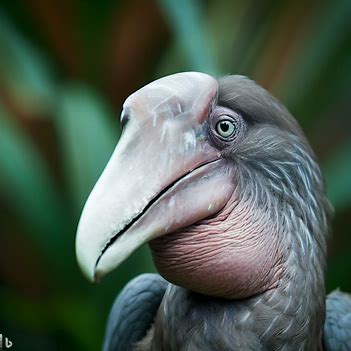
Appearance and Characteristics:
The Dodo Bird was about 1 meter (3 feet) tall and weighed between 10 and 20 kilograms (22 to 44 pounds). It had a round body, tiny wings that couldn’t fly, and a hooked beak that made it stand out. The bird’s feathers were grayish-brown, with white or light-colored feathers in some places.
Habitat and Behavior:
The Dodo Bird lived in Mauritius’s thick woods and along the coast. It mostly ate fruits, nuts, and seeds found on the ground, but it also ate small animals occasionally. The Dodo Bird didn’t have to worry about being eaten because there were no natural predators on the island. This may have made it act a little naive and unafraid when it met people.
Discovery and Extinction:
Dutch sailors first saw the Dodo Bird in 1598. They said it was friendly and didn’t seem afraid of people. But when people moved to the island and brought animals that didn’t live there before, like pigs, rats, and monkeys, they caused significant changes to the island’s ecosystem.
The Dodo Bird population went down because these new species ate their eggs and fought for food with them.
The sailors who hunted them for food and fun also played a role in their deaths. The last time a Dodo Bird was seen was in 1681, and it is thought that the species went extinct soon after that.
Scientific and Cultural Significance:
The extinction of the Dodo Bird was one of the oldest examples of a species going extinct because of humans. Since then, the bird has become a symbol of extinction and what happens when people mess with fragile environments.
Scientists, scholars, and the general public are interested in the Dodo Bird because they don’t know much about it, and there aren’t many examples left.
Legacy and Conservation:
Even though the Dodo Bird is extinct, it has left a legacy that goes on.
The story of the Dodo Bird is a warning tale that shows how important it is to protect and preserve endangered species. People try to learn about the bird’s life and environment by studying the few bones and fossils that have been kept.
Also, the Dodo Bird has become a symbol for protecting endangered species and their habitats. This has led people worldwide to try to protect endangered species and their habitats.
Woolly Mammoth (Mammuthus primigenius)
During the last Ice Age, the woolly mammoth roamed the Earth. It died out about 4,000 years ago. These beautiful animals looked a lot like elephants do today, but they had long, bent tusks and thick coats of shaggy hair.
Scientists have learned a lot about woolly mammoths’ biology and behavior from the frozen specimens they have found.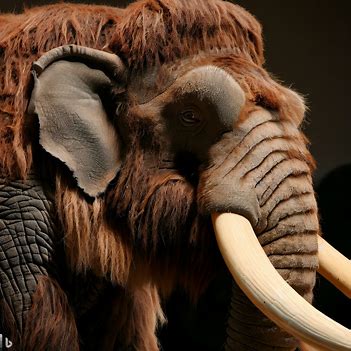
Appearance and Adaptations:
The Woolly Mammoth was a big animal that looked like an elephant. It had long, bent tusks and a thick coat of shaggy hair. Because of these changes, they could live in the cold settings of the north. In addition, their hide, which had a layer of stiff guard hairs on the outside and a thick undercoat, protected them from the cold weather.
Range and Habitat:
Woolly Mammoths lived in different parts of Europe, Asia, North America, and other places in the Northern Hemisphere. They could live in fields, tundra, and shrublands, where they ate grasses, sedges, and other herbaceous plants.
Extinction and Human Impact:
Scientists still argue about what exactly killed off the Woolly Mammoth. But people are thought to have had a significant impact. Changes in climate, the loss of habitat, and hunting by early humans probably led to their fall. Woolly Mammoths lived on Wrangel Island in the Arctic until about 4,000 years ago, when they died out.
Preservation through Frozen Specimens:
One of the most exciting things about the Woolly Mammoth’s heritage is that incredibly well-preserved specimens have been found in frozen environments. As a result, scientists have learned much about these ancient animals’ biology, behavior, and looks from looking at their rigid bodies.
Scientists are still talking about whether or not the species could be brought back from the brink of extinction by using the DNA found in these bones.
Coexisting with People:
Unlike some now-dead animals, Woolly Mammoths lived alongside early humans. Ancient cave paintings and objects show people hunting or playing with these magnificent animals. The first people used mammoth tusks to make tools, weapons, and artwork.
The fact that Woolly Mammoths and early people got along well shows their importance to those cultures.
The woolly mammoth roamed the Earth during the last Ice Age, but it went extinct about 4,000 years ago.
These beautiful animals looked a lot like elephants do today, but they had long, bent tusks and thick coats of shaggy hair. Scientists have learned a lot about woolly mammoths’ biology and behavior from the frozen specimens they have found.
The Tasmanian Tiger (Thylacinus cynocephalus)
was a ravenous marsupial that lived in Tasmania, Australia, and New Guinea. It was also known as the thylacine. Even though it was called a “tiger,” it wasn’t one. Instead, it had a pouch like a kangaroo and a head like a dog. The last known animal photographed was at Berlin Zoo in 1933.
The thylacine was 100 to 130 cm (39 to 51 inches) long, and its tail was 50- to 65 cm (20- to 26 inches). Its weight ranged from 15 to 30 kg (33 to 66 pounds), but about 25 kg (about 55 pounds) was averageTragically, the last Tasmanian tiger ever seen died in a zoo in 1936. This was the end of the species.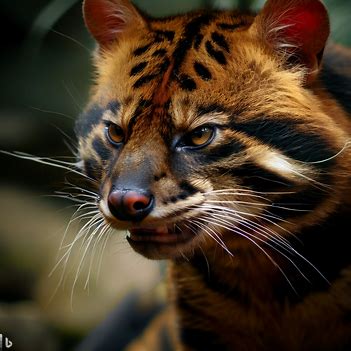
It went extinct because its habitat was destroyed, it was hunted, and it got sick.
The Tasmanian Tiger was exciting because it looked like a mix of different animals. It was long and skinny, with a stiff tail and brownish-yellow fur. It got its name from the dark stripes or “tiger-like” marks on its lower back, which made it stand out.
The head of the Tasmanian Tiger looked like that of a dog; like other marsupials, it held its young in a pouch.
Habitat and Behavior: Tasmanian tigers were common in Tasmania, Australia, and New Guinea. It lived in many different places, like woods, grasslands, and scrublands. As a carnivorous marsupial, it mostly ate small to medium-sized animals, birds, and reptiles. It lived alone and hunted at night. It was known for being sneaky when it pursued.
The fall of the Tasmanian: Tiger began when European settlers moved to Australia and Tasmania. Eventually, the species went extinct. They thought the animal was dangerous to their livestock, so they actively hunted it.
This led to a significant drop in its number. Loss of habitat, disease, and competition from new predators like foxes and dogs also played a role in its fall. The last known Tasmanian Tiger died in a zoo in 1936. This was the end of the species.
Controversy and the Tasmanian Tiger’s Possible Survival: The extinction of the Tasmanian Tiger has led to discussions and debates that are still ongoing today. There have been reports of sightings or supposed proof that the species is still alive, which has led to a lot of searches and investigations.
But no solid proof has been found that the Tasmanian Tiger is still alive in the wild.
Significance for Conservation and Culture: The Tasmanian Tiger is important for conservation and culture. People are interested in it because of its unique features, strange disappearance, and how human activities led to its decline.
Through conservation programs, public education, and scientific study, people are working to remember and learn more about this famous marsupial.
Quagga (Equus quagga quagga)
The Quagga used to live in South Africa. It was a type of plains zebra. It looked different because only the front half of its body was stripped.
The back half was brown and looked like a horse. The Quagga became extinct in the late 1800s because it was hunted too hard, destroying its environment.
Using careful breeding, people are trying to bring back a subspecies called the Rau quagga that looks similar.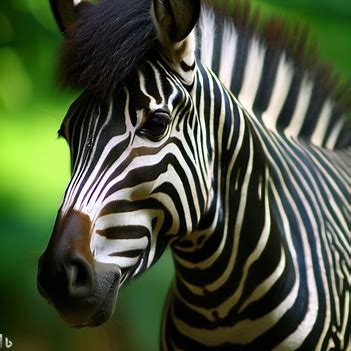
Distinctive Appearance:
The Quagga stood out from other zebras because it looked different. Its head, neck, and front legs had the black and white lines typical of zebras, but its back legs were brown and looked like a horse’s.
The Quagga had a unique pattern of stripes that got less noticeable toward the back of its body. This made for a striking difference.
Habitat and Range:
The Quagga came from the grassy fields of South Africa, especially the area that is now called the Karoo. It lived in open fields and savannahs, eating grasses and other plants.
Extinction and Conservation:
The Quagga went extinct at the end of the 19th century because it was hunted too much and lost its environment. But selective breeding has been used to bring back the Quagga-like features.
The result of these attempts is the Rau quagga, a subspecies that looks a lot like the extinct Quagga. The project teaches how people can affect species and how important it is to protect them.
Behavior and social structure:
Like other zebras, quaggas were social animals in small family groups called harems. Most of the time, these harems had one dominating male, several females, and their young. They talked to each other by making sounds, moving their bodies, and making faces.
Ecological Role:
Quaggas were essential to the environment where they lived. As grazers, they helped keep the grasslands in good shape by eating the grasses.
This kept the meadows from getting too overgrown and allowed new plants to grow. Their presence also changed where other species lived because of the way they grazed and created open areas.
Great Auk (Pinguinus impennis)
The great auk was a giant bird that couldn’t fly. It lived in the North Atlantic, especially Iceland, Greenland, and Canada. It was big and stocky, with short wings and black and white feathers that made it stand out. The great auk was hunted hard because it couldn’t fly, and its feathers, meat, and oil were valuable.
The last known person was killed in 1844, which ended the species.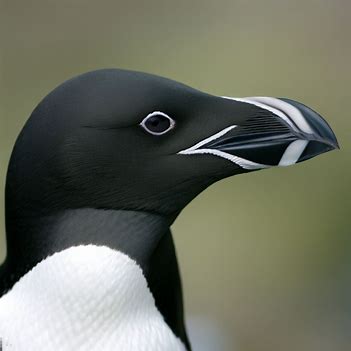
Appearance and Distribution:
The Great Auk stood out because it was stocky, had short wings, and had black and white feathers. It was about 29 to 33 inches tall, or 75 to 85 centimeters. Great Auks lived mainly in the north of the Atlantic Ocean. They nested in groups on rocky rocks and spent most of their time at sea.
Role in the Ecosystem:
Great Auks were very important to the marine ecosystem where they lived. They were very good at diving and could swim and hunt for food underwater to catch fish, crabs, and other sea creatures. Their place in the food chain helped keep the North Atlantic environment balanced and full of different kinds of life.
Hunting and extinction:
Because the Great Auk couldn’t fly, humans could catch it quickly. People wanted the bird’s meat, feathers, and oil. Their number dropped soon because they were invariably hunted, their habitat was destroyed, and invasive species were brought in. In 1844, the last known pair of Great Auks died on the island of Eldey. This marked the end of the species.
Cultural Significance:
Both native people and European explorers were interested in the Great Auks because of their cultural significance.
They were shown in ancient paintings on rocks and told about in tales and legends. In addition, early naturalists and travelers were fascinated by how the bird looked and behaved because they had never seen anything like it.
Scientific Study and Conservation:
Even though the Great Auk is no longer alive, its remains and fossils that have been kept have given scientists important information. Scientists can study the bird’s body, habits, and genes by looking at these specimens held in museums and research centers.
These studies help us learn more about evolution, ecology, and the importance of protecting rare species through conservation efforts.
These animals that are no longer around are a warning of how delicate the balance between species is and how important it is to protect our planet’s biodiversity through conservation efforts.
By studying these animals, we can learn from the past and try to protect the unique species still around today.
